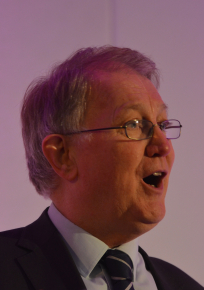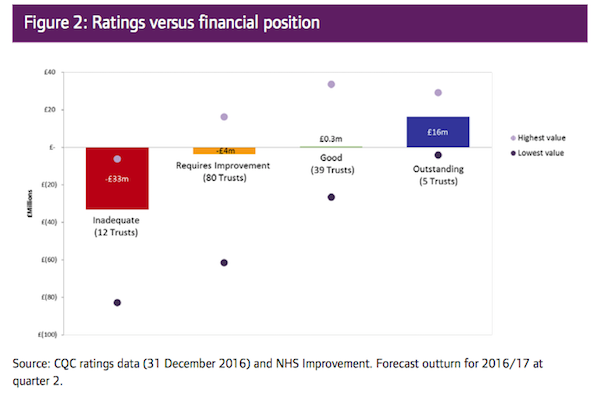News / Quality and finances linked, says CQC
Currently, the 10 questions governing the well-led review include an assessment of whether the trust manages financial pressures so they do not compromise the quality of care.
The CQC and NHS Improvement recently consulted on new use of resources and well-led assessments. The former would be used to identify support needs under the NHS Improvement single oversight framework and to generate a proposed use of resources rating for consideration by the CQC. The CQC has proposed strengthening the well-led assessment to put greater emphasis on financial and resource governance.
In its report, The state of care in NHS acute hospitals: 2014 to 2016, the CQC insisted trusts did not have a simple choice between being financially efficient and providing high-quality care. It said: ‘Some problems with the quality of care do require new resources, but many do not. For example, protecting patients from infection with good hand hygiene and minimising the risks of never events through full use of the World Health Organisation Surgical safety checklist cost very little, and yet we have seen much poor practice.’
The CQC acknowledged that despite ongoing financial challenges and rising demand trusts have often made and continued to make improvements in care. CQC chief inspector of hospitals Sir Mike Richards (pictured) said the need for change across the NHS was pressing. 
‘What is clear is that while staff continue to work hard to deliver good care, the model of acute care that once worked well cannot continue to meet the needs of today’s population. The NHS now stands on a burning platform – the need for change is clear, but finding the resources and energy to deliver that change while simultaneously providing safe patient care can seem almost impossible.’
He added: ‘What this report demonstrates, however, it that transformational change is possible, even in the most challenging of circumstances – we have witnessed it, and seen the evidence that making practical changes to the way that care is delivered can benefit patients.’
NHS Confederation chief executive Niall Dickson agreed that change was required.
‘It is now clear that A&E, in particular, is close to breaking point because the wider system isn’t sufficiently funded to keep enough people healthy nearer home. But money alone will not solve the problem – the current model is simply not sustainable and so we need to change the way care is delivered.
‘There are already examples where new approaches are showing the way - the question is whether politicians will have the patience to give them time to develop and the courage to fund the system to cope with current pressures.’

Related content
We are excited to bring you a fun packed Eastern Branch Conference in 2025 over three days.
This event is for those that will benefit from an overview of costing in the NHS or those new to costing and will cover why we cost and the processes.